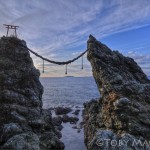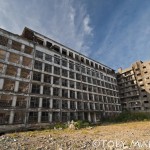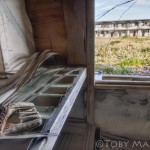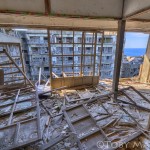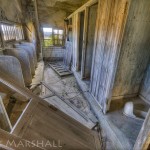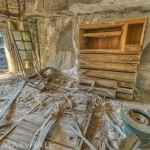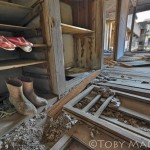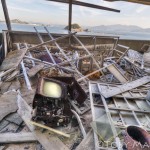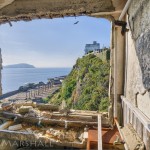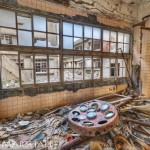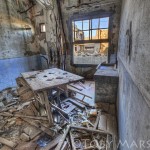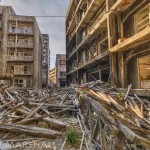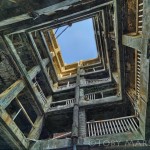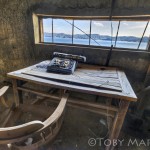Hashima Island lies just off the coast of Kyushu near the city of Nagasaki. It was first populated in 1887 as a coal mining facility. Only about 500 meters long and 200 meters wide–comprising an area of a mere 16 acres–it was given the nickname Gunkanjima (Battleship Island) for its uncanny resemblance to such from the shore–in fact it was supposedly once even torpedoed by a nervous US Navy during WW II.
At a time when most Japanese cities were made of low wooden structures, Gunkanjima became something of a prototype of modern urban Japan: home to the first concrete building in the country in 1910, and soon thereafter to crowded blocks of apartments at one end of the island, built to house a population that at its peak numbered more than 5000. It was a tight knit, true community–with school, shops, dentist, hospital, movie theater and temple. The mine itself occupied the opposite end of the tiny landmass, with one shaft reaching more than one kilometer under the seabed.
In the 1960’s, with petroleum replacing coal for Japan’s energy needs, mines began to close. Mitsubishi shut down Gunkanjima in 1974, relocating workers and their families to other facilities. Because of limited space on the ships that returned them to the mainland, residents were urged to leave unwanted and large items behind. The island was completely abandoned, undisturbed and slowly surrendering to the elements for thirty-five years, until being reopened to very limited tourism in 2009.
Battered by heavy seas and yearly typhoons, the structures have deteriorated quickly. They are crumbling, and entering the buildings is generally prohibited. I was lucky enough to be the cameraman for a TV story accompanying a former resident to his old home, and so I threw my still camera over my shoulder, managing to get a few shots here and there. I certainly wish I had had more time, but I believe my photos faithfully convey the eerie ambiance to be found there, a vision of what any modern city might look like with its human tenants long gone, inhabited only by mice scurrying among the ruins, silent but for the cries of the kites, who prey on them, riding high the flowing winds.

